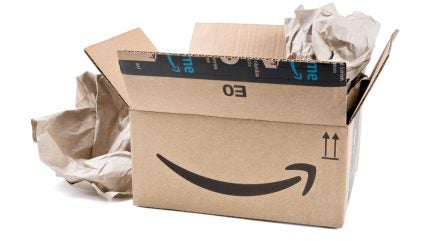
The e-commerce industry has seen rapid growth in recent years, bringing to light concerns about the environmental impact of packaging waste. As one of the largest e-commerce companies globally, Amazon’s approach to packaging has significant implications for sustainability.
In response to increasing pressure from consumers, environmental groups, and regulatory bodies, Amazon has taken steps to introduce more recyclable packaging options.
This article examines Amazon’s recyclable packaging initiatives, their impact on packaging waste, and what these efforts mean for the broader industry.
Efforts to reduce packaging waste
Amazon’s “Frustration-Free Packaging” programme, launched in response to concerns over excessive packaging, is an attempt to minimise waste. The programme aims to ship products in easy-to-open, recyclable packaging, often eliminating the need for an additional Amazon-branded box.
This initiative, according to Amazon, has led to the removal of significant amounts of packaging material, with reported reductions of over 1.5 million tonnes since 2015.
The reduction in packaging waste aligns with a growing trend in the e-commerce sector, where companies face increasing scrutiny over their environmental practices.

US Tariffs are shifting - will you react or anticipate?
Don’t let policy changes catch you off guard. Stay proactive with real-time data and expert analysis.
By GlobalDataHowever, while Amazon’s figures suggest a positive trend, it’s essential to consider the broader context. Many environmental experts argue that more systemic changes across the entire e-commerce sector are necessary to address packaging waste issues comprehensively.
Transition to recyclable materials
Amazon’s shift towards recyclable materials is another aspect of its packaging strategy. The company has introduced paper-based mailers that are curbside recyclable, reducing reliance on plastic packaging.
This transition forms part of Amazon’s pledge to reduce its environmental impact and work towards net-zero carbon emissions by 2040.
The adoption of recyclable packaging materials is a step in line with industry-wide efforts to tackle plastic waste, yet challenges remain. Critics point out that while recyclable packaging is an improvement, it is not a complete solution to the packaging waste problem.
Issues such as recycling infrastructure, consumer habits, and the carbon footprint associated with producing these materials must also be considered to gain a holistic view of the situation.
Amazon’s “Less Packaging, More Smiles” initiative has urged suppliers to adopt more sustainable packaging designs, which may contribute to broader shifts in the supply chain.
However, the long-term effectiveness of this strategy will depend on consistent industry-wide adoption and the development of recycling systems that can manage increased volumes of recyclable waste.
Utilising technology for packaging efficiency
In an effort to optimise packaging and reduce waste, Amazon has introduced technology-driven solutions, including machine learning algorithms that select appropriately sized boxes for each order.
This approach reduces the use of excess packaging materials and filler, contributing to improved recyclability.
The use of technology in packaging is not unique to Amazon, but the scale at which it operates makes this application particularly noteworthy. By reducing the number of delivery trips through optimised packaging, Amazon also addresses concerns related to carbon emissions.
However, whether these technological solutions can be fully integrated into the wider e-commerce industry remains to be seen, as smaller companies may lack the resources to implement similar systems.
Amazon has also experimented with alternative packaging materials, such as water-activated tape, which is more recyclable than traditional plastic tape.
Such initiatives reflect an ongoing exploration of more sustainable packaging options, but questions remain about their scalability and the impact on recycling systems that may not be equipped to handle new types of materials.
Broader implications for the packaging industry
Amazon’s efforts to introduce recyclable packaging have contributed to a wider discussion about sustainability in packaging. As one of the major players in e-commerce, the company’s actions have prompted other businesses to evaluate their own packaging practices.
However, the question of whether these changes are enough to create meaningful industry-wide impact is still under debate.
The packaging industry, influenced by shifts in consumer expectations and regulatory pressures, is increasingly moving towards sustainable practices. Amazon’s initiatives, while significant, represent just one part of a larger effort to address packaging waste.
Other e-commerce companies, suppliers, and manufacturers are adopting similar approaches, using recyclable and biodegradable materials and redesigning packaging to reduce waste.
Regulatory developments, especially in regions like the European Union, where single-use plastics face stricter regulations, have also played a role in driving the push towards recyclable packaging.
Amazon’s efforts reflect a response to such trends, yet the broader industry still faces challenges in adapting to evolving regulatory requirements and consumer expectations.



